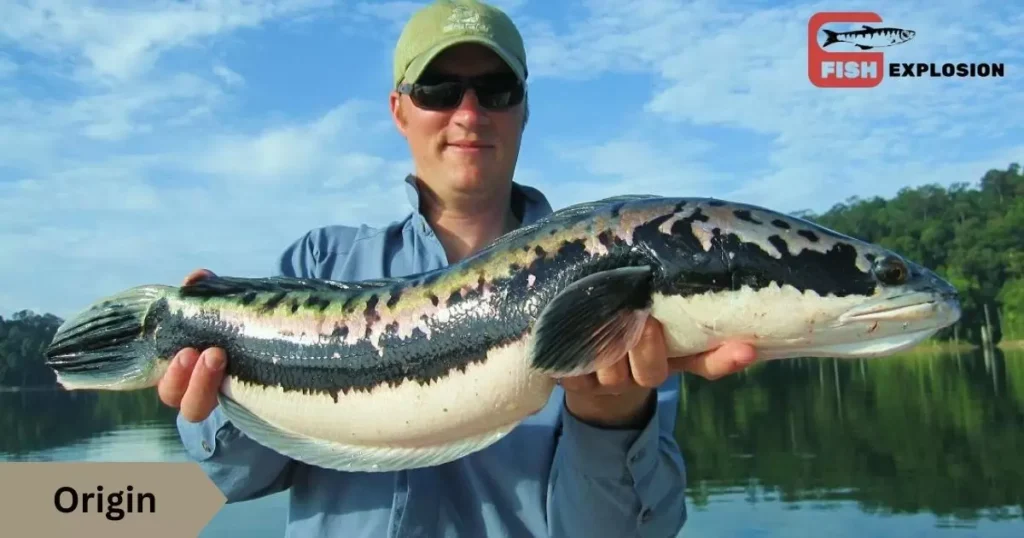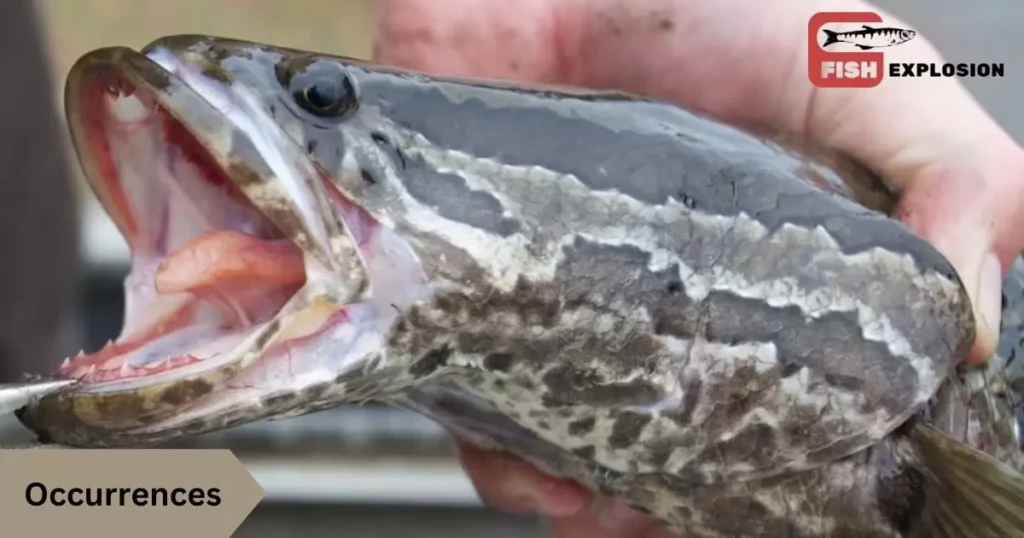The northern snakehead (Channa argus) is a species of freshwater fish native to parts of Asia and Africa.
It is an invasive species in several areas, including parts of the United States, where it has caused significant ecological concerns. The northern snakehead is a predatory fish known for its ability to breathe air, allowing it to survive in low-oxygen environments and even travel short distances over land.
This adaptability, combined with its voracious appetite and reproductive potential, has enabled the northern snakehead to establish breeding populations in various waterways, posing a threat to native fish species. Its presence has prompted extensive efforts by wildlife agencies to monitor and control its spread, highlighting the challenges posed by invasive species in aquatic ecosystems.
Origin

The northern snakehead originated in parts of Russia, China, and Korea. It was likely introduced to non-native waters through aquarium releases and escapes.
One of the first established populations in the U.S. was discovered in a Maryland pond in 2002. Since then, it has spread to other waterways in several states, aided by its hardy nature.
Habitat
The northern snakehead thrives in a variety of freshwater habitats, including rivers, streams, ponds, and lakes. It prefers slow-moving or stagnant waters with abundant vegetation and muddy bottoms.
The fish can tolerate a wide range of temperatures and low oxygen levels. Its ability to breathe air allows it to survive in harsh conditions and travel over land. This adaptability enables the northern snakehead to invade and establish itself in new habitats.
Introduction and Spread
The northern snakehead is believed to have been introduced to non-native waters through releases from the live food fish trade and from home aquariums. One of the first established populations in the United States was discovered in a pond in Crofton, Maryland, in 2002, likely resulting from an aquarium release.
Since then, the species has spread to other waterways in several states, including Pennsylvania, New York, Virginia, and Arkansas. Its ability to survive out of water for several days and travel over land has facilitated its spread to new bodies of water.
Impacts
The presence of the invasive northern snakehead poses significant threats to native species and ecosystems. As a top predator, it can disrupt food webs and outcompete or prey on native fish populations.
Its aggressive nature and ability to survive in diverse habitats make it difficult to control. The northern snakehead’s introduction has prompted costly elimination and monitoring efforts by wildlife agencies.
Identification
- Elongated, cylindrical body with a large, flattened head and protruding jaw.
- Dark brown or olive-green coloration with irregular blotches and markings.
- Long dorsal and anal fins that run most of the body length.
- Small scales that feel rough to the touch.
- Capable of breathing air through a primitive lung-like structure.
- Can grow up to 3 feet in length, though typically smaller in non-native habitats.
Prevention and Control
The best way to prevent the further spread of the northern snakehead is through public education and strict regulations on the live food fish trade and ownership of the species.
Individuals should never release unwanted pets or aquarium fish into local waterways, as this can introduce destructive invasive species into new environments. Proper disposal methods should always be followed.
While completely eradicating established northern snakehead populations is extremely difficult, various control methods are being employed by wildlife agencies.
These include intensive surveying and sampling, targeted removal by electrofishing or netting, habitat manipulation, and, in some cases, the authorized use of toxicants or biological controls like sterile male fish.
An integrated management approach using multiple tactics is often necessary to impede the growth and expansion of this tenacious invasive species.
Occurrences

Since its initial discovery in a Maryland pond in 2002, the northern snakehead has gradually expanded its non-native range across several U.S. states.
Established populations now exist in the Potomac River watershed, spanning parts of Maryland, Virginia, and Pennsylvania. The species has also been reported in New York, Arkansas, California, and Philadelphia waterways.
While many of these occurrences likely stem from aquarium releases, the fish’s remarkable ability to travel over land during rainy periods has allowed it to infiltrate new water bodies.
Concern remains high that the northern snakehead could become even more widespread and severely impact sensitive ecosystems, driving ongoing monitoring, rapid response, and public outreach efforts wherever the invasive fish rears its menacing head.
Northern Snakehead Fish Scientific Name
The northern snakehead fish’s scientific name is Channa argus. Channa is the genus, which includes several snakehead species. Argus refers to the mythical Greek giant Argus, known for having numerous eyes. This name likely relates to the fish’s alertness and protruding eyes.
Read More: “17 Types of Axolotl: A Quick Guide”
New York Distribution Map
In New York, the invasive northern snakehead has been found in various waterways across multiple counties.
A distribution map would highlight the specific lakes, rivers, and streams where the fish’s presence has been confirmed.
Such a map serves as a tool for tracking the snakehead’s spread and informing management strategies within the state.
FAQ’s
Can humans eat snakehead fish?
Yes, humans can eat snakehead fish if properly prepared.
Are snakehead fish poisonous?
Snakehead fish are not poisonous to eat but their invasion harms local ecosystems.
What are the effects of northern snakehead?
The effects of northern snakehead include out-competing native species.
How did the northern snakehead get to Central Asia?
Northern snakehead fish were intentionally and accidentally introduced to Central Asia as aquarium fish.
Can you eat snakehead eggs?
Snakehead eggs can be eaten, but over-consumption may cause food poisoning due to contaminants.
Conclusion
The northern snakehead is an invasive fish species that was introduced to many regions outside of its native habitat in Asia. It is known for its ability to survive out of water and can “walk” short distances, allowing it to easily spread to new bodies of water.
Once established in an ecosystem, the snakehead outcompetes native fish species for resources and has caused severe declines in the populations of many other fish. Its voracious appetite and lack of natural predators in invaded regions allow it to rapidly reproduce and overtake environments.
Government agencies have spent millions of dollars trying to control snakehead populations through targeted removals, but complete eradication has proven very difficult once the snakehead has become firmly established.
The northern snakehead remains a serious invasive threat that, if left unchecked, can devastate entire freshwater ecosystems through predation and competition with local species. Monitoring and control efforts need to continue to help reduce its negative impacts.
With three years of dedicated expertise in the niche of fish, my domain knowledge encompasses breeding, habitat maintenance, health management, and sustainable aquaculture practices, ensuring optimal outcomes in the aquatic realm.











